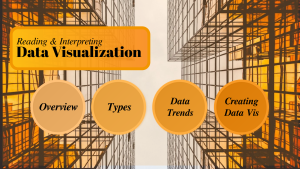34 Data Visualization
Learning Objectives
-
Understand how to read visualized data for Science and Social Studies texts, including charts, graphs, and maps.
-
Appropriately paraphrase and summarize texts.
Chapter & Discussion
This chapter includes a presentation that can be navigated in a classroom setting or independently. You can access the presentation via the link below.
Reading for Science & Social Studies: Data Visualization
Work through the different sections of the chapter and discuss ideas and topics as they arise. If you’re working independently, take notes instead. Notes and active discussion will be helpful in navigating this week’s assignments.
Overview
The Science and Social Studies GED tests both have goals involving interpreting visualized data.
This means being able to read charts, graphs, and maps. The main skills here are:
- Identifying trends in the data
- Figuring out the story the data is telling
- Making inferences based on what you found out
Today, we’ll practice these skills, looking at the most common types of “data-vis”, practicing how to read them, and making our own.

Types
The five most common types of data visualization are:
Line Charts: These charts are meant to show the relationship between two things. Time is often on the x-axis, and something else on the y-axis. That way, we can see change over time.
Bar Graphs: Similar to line charts, bar graphs show a relationship between two things. However, the bar graph wants to make groups of the y-axis data to tell its story.
Pie Charts: Pie charts want to show us percentage data. They help us compare amounts of things versus other things.
Scatter Plots: These are like line charts that compare big data sets or have things other than time on the x-axis. They help us see trends.
Maps: Maps want to show us data that impacts a geographical area. They show us variables over space rather than time.
Note: You’ll find a more in-depth look at these types of data visualization in this chapter’s presentation (above) and in the assigned reading (below).
Data Trends
The biggest goal of these types of questions is being able to find trends. That means, looking at this visualized data and being able to interpret the story it has to tell.
Once you can do this, you will be able to make inferences based on these stories. That means you can guess what they might tell us about the world, or data that hasn’t yet been collected.
As with many GED concepts, the best way to get better at this is to practice. You should practice:
- Finding trends in data-vis
- Making guesses based on those trends

Practice: Creating Data-Vis
Let’s practice making some data visualization.
1. Go to a trusted news site and find the 10-day forecast for any city.
2. Create a new spreadsheet using Google Sheets
3. Type each temperature into Column A.
4. Click on Insert at the top menu and then click on Chart
5. On the right, there is a drop-down menu of types of charts. Pick the one that you think best represents this data.
6. What is a trend in the next ten days for that city?
Assigned Reading
Here are this week’s readings. Additionally, please read for your own personal enjoyment for 1/2 hour each day. This will be called your “Reading Zone” reading and it will coincide with many upcoming activities.
Visualizing Data (via Crash Course and Arizona State University)
Assignment: Data Stories (250 Words)
Find a news article that focuses on data to tell its story to the audience (I highly recommend Vox for this). Answer the following questions:
-
What is a major takeaway from the article?
-
How does data support the ideas in the article?
-
How does the article choose to visualize this data? How does this help the author communicate ideas to the audience?
Assignment: Reading Zone Response (250 Words)
For Reading Zone, you must find a novel that is interesting to you and enjoyable to read. If you need help finding a Reading Zone book, please ask. Please read your Reading Zone book for a half-hour each day. On class days, there will be time in class dedicated to reading.
Create a two-paragraph response to the reading you did this week. The first paragraph should summarize what you read this week. The second paragraph should address the following prompt:
What is the protagonist of your book good at? What are some of their strengths? What do you think they still have to learn? How might they need to grow to overcome their obstacles?


